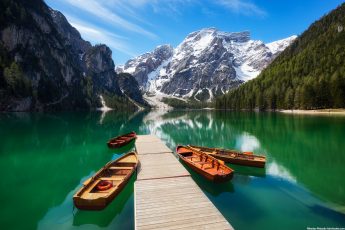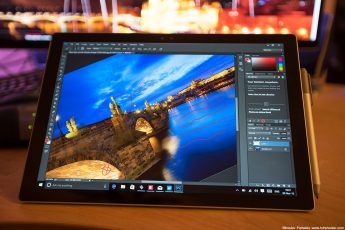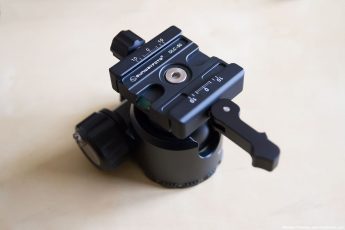There are many ways to add more detail to a photo. Today I’m going to show you one very popular, that can be done all just in Photoshop, without the need for any plugins at all. Of course if you have Color efex or Topaz adjust, you can use those, or any other plugin that gives similar effects. But let’s look at the Photoshop way.
This is a very easy process, so let’s get started.
1. Start by loading the photo you want to edit into Photoshop.
2. Then continue by duplicating the photo into a new layer. Just drag the background layer onto the new layer button (in the bottom right), or go under Layer/Duplicate layer. Select the new layer and change the blending mode to Vivid light.
3. Now still with the new layer selected, invert it. Either by hitting Ctrl+I or by going under Image/Adjustment/Invert. You will see a very grey image, but don’t worry :)
4. Next we need to apply Gaussian blur to this layer. So go under Filter/Blur/Gaussian blur and play with the radius, until you see the amount of detail you need. If you see too much halo around objects, try using a small smaller value. Hit OK to confirm.
5. Now we need to create a new layer, that contains all the onse we already have. Just hit Ctrl+Shift+Alt+E and it will be created for you. Select the new layer and change the blending mode to Soft light.
6. The last step we need to do, is delete the middle layer (the one set to Vivid light) as we don’t need it anymore, and it’s just in the way.
And thats all. I would suggest adding a mask onto the result, and just using it on the places you need it, not on the whole image. Feel free to ask if you have any questions to this :)












Very nice tutorial Miroslav! I have Topaz but it is always good to know how to do it from the basics.
Yeah.. it can come in handy one day :)
hello Miroslav what time of prosses it must add detail to the photo
Hi Bruno. It depends on what everything you are editing on a photo. But my general order in doing is: Lens correction -> Blending/Tonemapping -> Highlight/Shadows correction -> Color tweaking -> Adding detail/cotrast -> Noise reduction -> Resize and Shaprening .
Hello Miroslav!
Yeterday I played for few hours around using all of your “adding details” method, LR4 sharpening and NIK sharepener, but I came no close to the visual perceivness of sharpness of your pictures, inspite of having used the very same camera, lens, similar motive and lightning conditions. The difference between your and mine pictures look like you had used a 50MP camera and the best Zeiss lens (I know you did not). Do you happen to have a video about your sharpening approach on sale, or any other source to make public?
George
Hi Georg
no, I don’t have a video on that, but from what you describing, only two things to make it better come to mind. First is always use manual focus. I noticed a huge difference in my photos when I switched form auto to manual. Much much sharper results. Secondly, add sharpness to already resized photo, not to the full resolution (detail like this article shows, is for the full resolution). Nothing else comes to mind right now…
Thanks you for trying to help!
I suspect the visually perceived sharpness ist what your pictures excell in, this is a part of your mastery. Pixel-by-pixels sharpnes is merely a base for your sharp-looking pictures. If it does not annoy you too much, you may have a look here: http://goo.gl/vYfOt7 (this is a tiny URL to an ELLO picture taken with all good techniquis using same hardware as you do). I believe this picture is as sharp as your pictures in terms of amount of distinguishable different pixels per sqare mm, but it does not like as sharp as yours, because your software in your brain you use to control your computer tools (which are again quite similar to mine) is never version than mine.
regards
georg
Hi Georg
yes, you have a very nice sharpness in this shot, and maybe it’s even a little too much. And that actually could also be why you think its not sharp enough. Funny thing about the human brain is, that it works in relatives, not absolutes. So something will look sharper, if it’s next to something that not as sharp. So for instance here, I think if you tone down the sharpness on the trees, the city will immediately look sharper. I sometimes do it with selective noise reduction. The areas which I don’t want to have totally sharp, I use a stronger noise reduction. Then in the final sharpening, they create a little contrast to the much sharper areas. Also the mountains in the background, should not be as sharp as the city. You want to preserve a little of the glow effect the air creates.
Hope this helps you further :)
This lesson is more important to me as I thought it would be. Inspite of knowing better, I thought about hardware and software in order to obtain that kind of perceivness I want and forgot to think about brain. Yes sir, I will brake my own narrow-mindedness more often. Thank you!